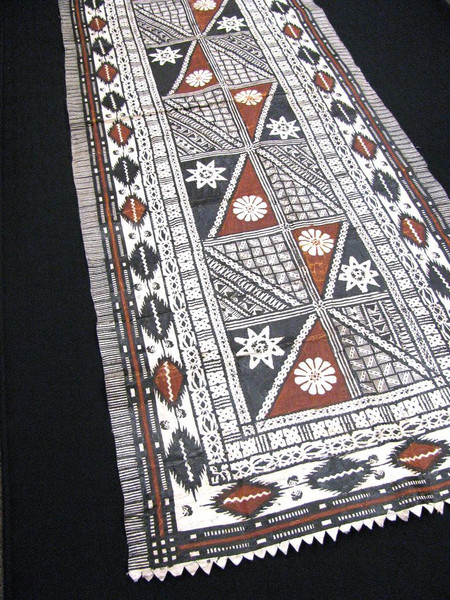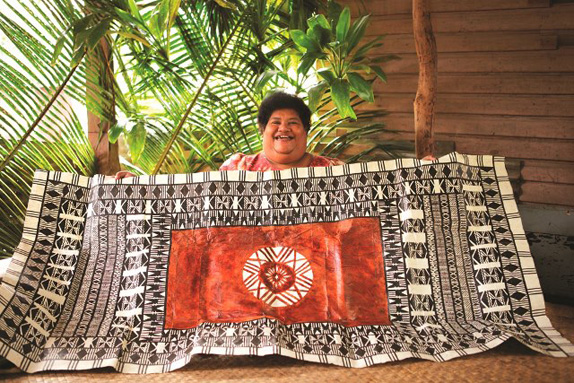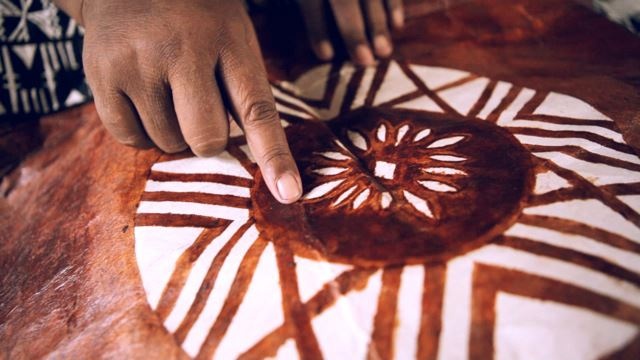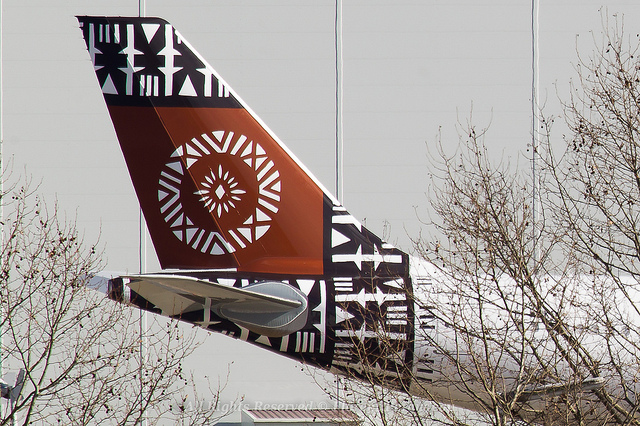
Tapa cloth (or simply tapa) is a bark cloth made in the islands of the Pacific Ocean, primarily in Tonga, Samoa and Fiji, but as far afield as Niue, Cook Islands, Futuna, Solomon Islands, Java, New Zealand, Vanuatu, Papua New Guinea (particularly in Oro Province around Tufi) and Hawaiʻi, where it is called kapa.
In French Polynesia it has nearly disappeared, except for some villages in the Marquesas.
Fijian tapa cloth, called masi, is made of the bark of the mulberry tree and is traditionally crafted by women. It is a labour-intensive activity, which involves the planting, harvesting, de-barking, scraping, coiling, spreading and drying of the bark and concludes with the application of designs and motifs. Masi is stiffer and more parchment-like than Samoan or Tongan tapa. The patterns are more intricate, detailed and cleaner, achieved by using a block print process. Black and dark brown dyes contrast strongly against the white of the tapa, making for a striking final result.
Traditionally, masi is used for celebrations: the wrapping a newborn baby, conferring of a new Chief, as gifts of exchange at a wedding and for gatherings of mourning.
Today in Fiji, masi is still a symbol of importance at such occasions; it’s role has expanded to include events such as the opening of a new building, the purchase of a new car or the launch of a new boat. Because tapa is made by hand and the materials are so close to their raw form, it is characteristic of the art that inconsistencies in pattern or material occur. Being passed along as a gift, tapa may also exhibit signs, such as creases, of its authenticity and important place in tradition and history.
The use of traditional patterns and designs are clearly evident in this beautifully constructed masi. The centre panel shows a black and brown flower and star section adjacent to diagonal lines of these deeply important traditional patterns. Contrasting colours of black, brown and white feature in layers upon layer of patterned borders, drawn with precision.
This beautiful masi features boxes of Fijian flowers and patterns forming a panel down the center, with borders of beautiful, traditional, Fijian designs.




